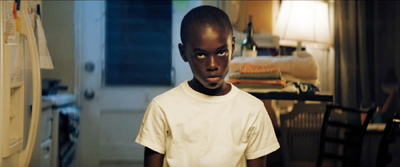
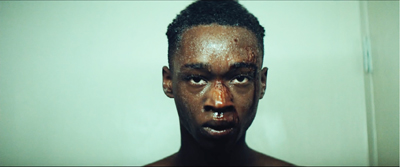
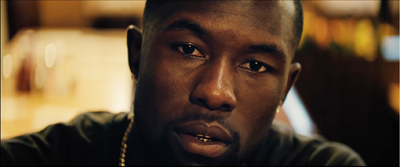
By Sarah Foulkes
If mainstream cinema is upheld to the task of democratically representing its viewers than it often fails. So when a film comes out that represents marginalized figures it’s passed under the kind of scrutiny that a lot of other films evade. As if clinging to a lifeboat of fair representation, critics and audiences look for holes in the raft - sometimes discarding it entirely, or patching it up with forgiving praise. But Barry Jenkins’ film Moonlight has proven to be an indestructible raft (but not by any means “tear”-proof). As we are prone to do when talking about films depicting minorities, we compare it to the ones that came before it. Indeed, two of the most notable queer films from this century are Brokeback Mountain and Carol. They both take place in pre-Stonewall America. But Moonlight is set in the present and the twenty odd years leading up to it. Though Moonlight couldn’t be more different from those two aforementioned films, all three share a significant similitude: none of these films stage a coming out scene. In the films set before the 1969 Stonewall riots, coming out is an unwise, if not unthinkable, decision. With characters forced out of the closet and their secret used against them. Indeed, a lot of queer narratives play out like detective stories. Who will find out their secret and what will they do with that knowledge?
If mainstream cinema is upheld to the task of democratically representing its viewers than it often fails. So when a film comes out that represents marginalized figures it’s passed under the kind of scrutiny that a lot of other films evade. As if clinging to a lifeboat of fair representation, critics and audiences look for holes in the raft - sometimes discarding it entirely, or patching it up with forgiving praise. But Barry Jenkins’ film Moonlight has proven to be an indestructible raft (but not by any means “tear”-proof). As we are prone to do when talking about films depicting minorities, we compare it to the ones that came before it. Indeed, two of the most notable queer films from this century are Brokeback Mountain and Carol. They both take place in pre-Stonewall America. But Moonlight is set in the present and the twenty odd years leading up to it. Though Moonlight couldn’t be more different from those two aforementioned films, all three share a significant similitude: none of these films stage a coming out scene. In the films set before the 1969 Stonewall riots, coming out is an unwise, if not unthinkable, decision. With characters forced out of the closet and their secret used against them. Indeed, a lot of queer narratives play out like detective stories. Who will find out their secret and what will they do with that knowledge?
Moonlight - set in Miami - exists in a world where coming out could ostensibly happen. Chiron is a black queer (or queer black?) boy - a visible and invisible minority. It is perfectly feasible that especially in light of President Obama’s recent legalization of marriage, Jenkins could’ve presented a scene in the final chapter in which Chiron tells his mother that he is gay. Yet, his decision to not include a cathartic coming out scene reveals the intersectional disjunct within gay rights in contemporary America. Chiron, and many others like him, don’t have the kind of privilege that would ensure a safe coming out. The thought of coming out isn't even addressed. It's not about coming out and revealing his authentic self. That’s not his priority. It's about surviving.
The closest the film comes to any form of coming out is in the first chapter when Little asks Juan if he's “a faggot.” This heart-string-pulling scene unveils the disempowering feeling of being, as Eve Sedgwick refers to it, in a glass closet. What do they know about me that I don't? Chiron’s mother, the kids that bully him at school, they have read his queerness before Chiron has had a chance to understand it for himself. Whoever possesses the knowledge about his sexuality has the power.
If the scene on the beach with Kevin is a kind of unspoken coming out scene in so far as he attains his sexual desire, then Chiron does not experience a feeling of liberation. As soon as he walks out of one closet, dozens of others erect themselves in front of him. Chiron must constantly re-negotiate his sexuality with those around him. Indeed, with his very first intimate encounter, he is beaten up and upon retaliation is sent to jail. He learns too early the life-threatening dangers of queer intimacy. In the final chapter, as Barbara Lewis coos ”Hello Stranger” on the jukebox, Chiron must even re-negotiate and re-introduce his queerness with Kevin, the only person he’s ever been truly intimate with. What happened on the sandy beach left a trace that can easily be brushed away by Kevin, but not Chiron.
A liminal space between the ocean and the urban, the beach hosts a makeshift baptism with Juan, his sexual intimacy with Kevin, and his dream of Kevin having sex with a girl. The baptism also doubles as a lesson in survival and love. Floating means not drowning, but also letting go. The two scenes with Kevin on the beach add to the complexity of Chiron’s - and anyone’s for that matter - sexuality. We can see him working out his sexuality unconsciously.
In the first two chapters, Chiron does not perform his sexuality. In fact, it is his anti-performance, his shyness, that alerts others to his gayness. If this shyness is the outward manifestation of shame, then we never see his shame recuperated as pride. Jenkins is offering a stinging reminder that amidst the gay pride parades and International Coming Out Days, shame has been left behind with underprivileged bodies of colour.
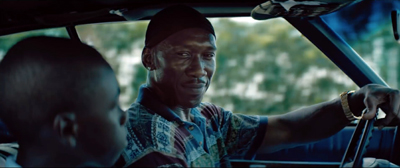
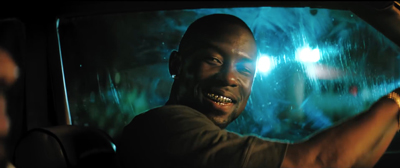


Thus, in the final chapter, it comes as no surprise that in an attempt to mask his queerness, he overtly performs his masculinity and his blackness. Replacing the now-deceased Juan, he is a drug dealer. This hardly surprising development has an interesting relationship to forbidden queerness, for what does drug-dealing deal in, if not the unspoken and all things work masquerading as loitering? And the do-rag that he wears to bed and gold fronts are his uniform. The scintillating fronts act as a barrier between Chiron and Kevin, between his performed hetero-masculinity and his gay desire. They are quite literally a front.
Another singular decision that Moonlight makes is in its cinematography. Jenkins avoids the trappings of voyeurism and ‘trauma porn’ by directly implicating the spectator through direct address and point of view shots. The viewer is directly confronted with the crazed screams of Chiron’s mother. Moreover, Moonlight is an exquisitely beautiful film with important social and political themes more applicable than ever. Whilst Tangerine - a film about black trans-sexworkers in Los Angeles - employeda very grimy and gritty aesthetic to illustrate the atmosphere and characters, Moonlight suggests that being black and gay in Miami doesn’t have to be defined by grittiness. Rather, the cinematography exquisitely renders the characters’ inner lives. Black, queer bodies that deserve to be captured in beautiful light, and not just moonlight.





